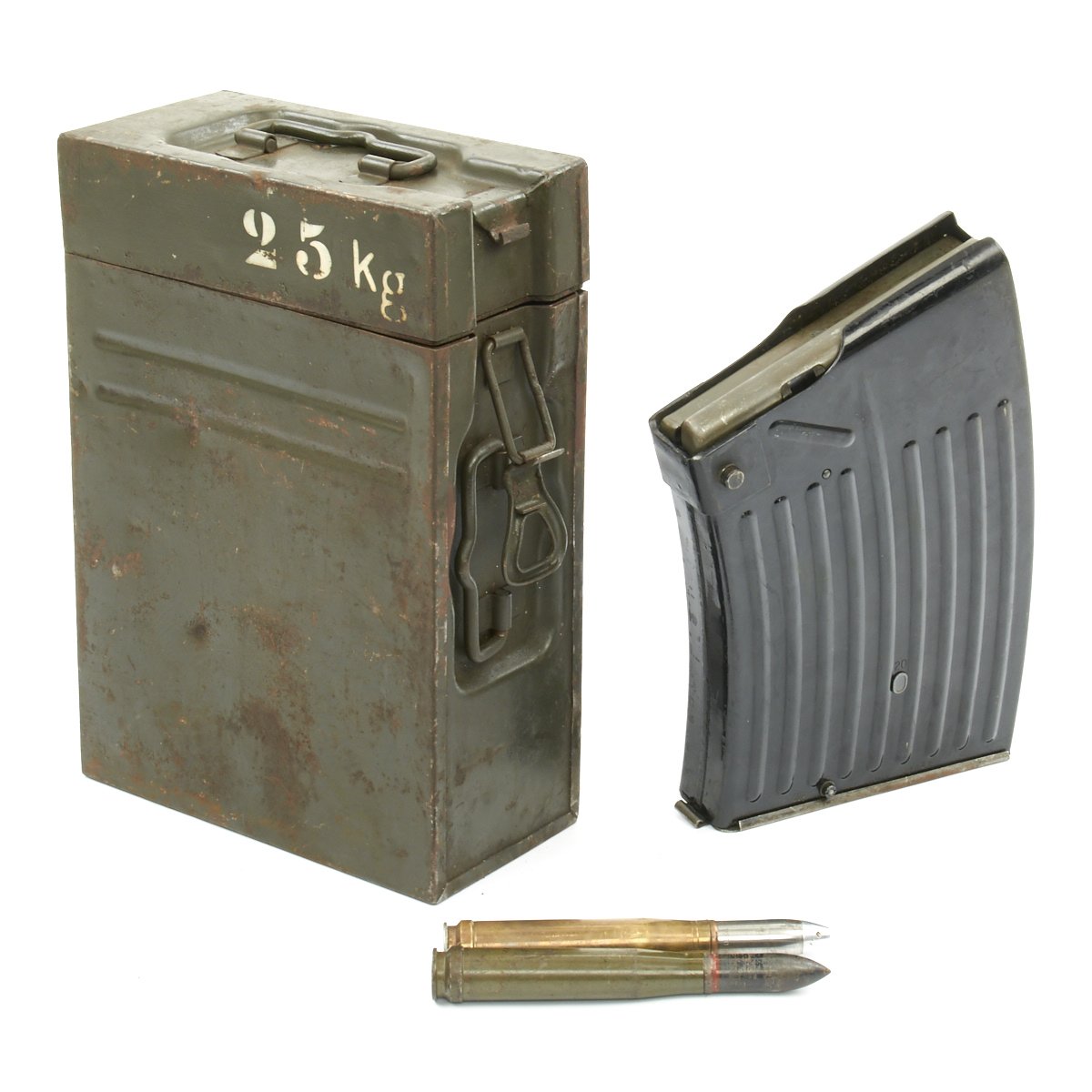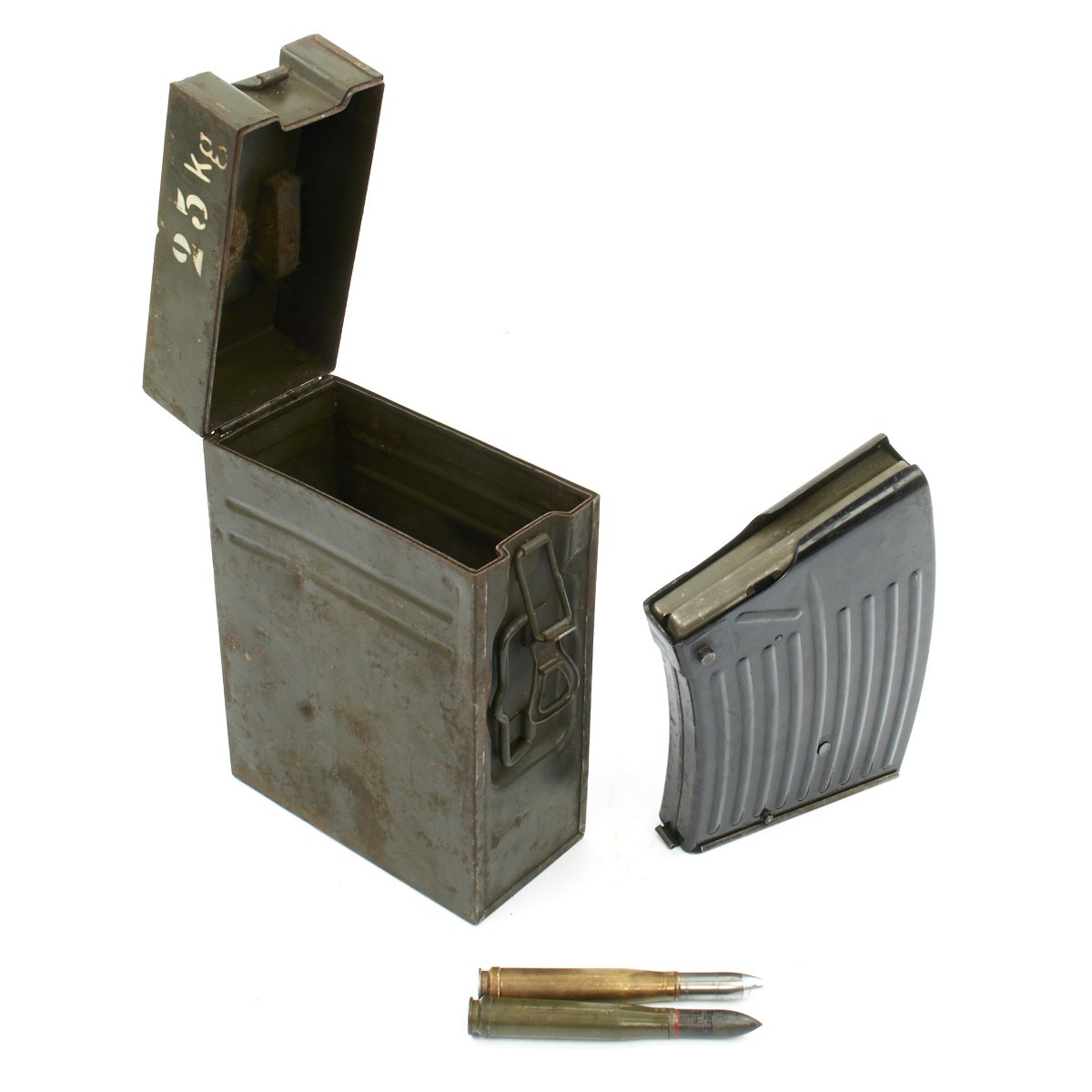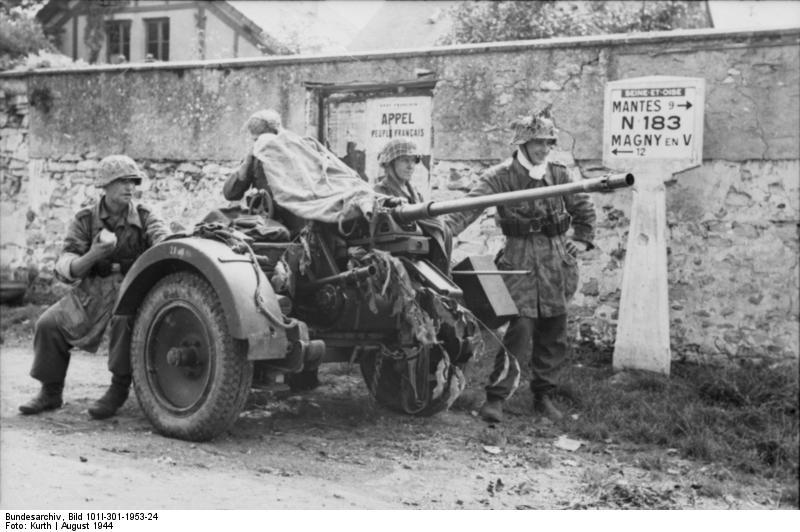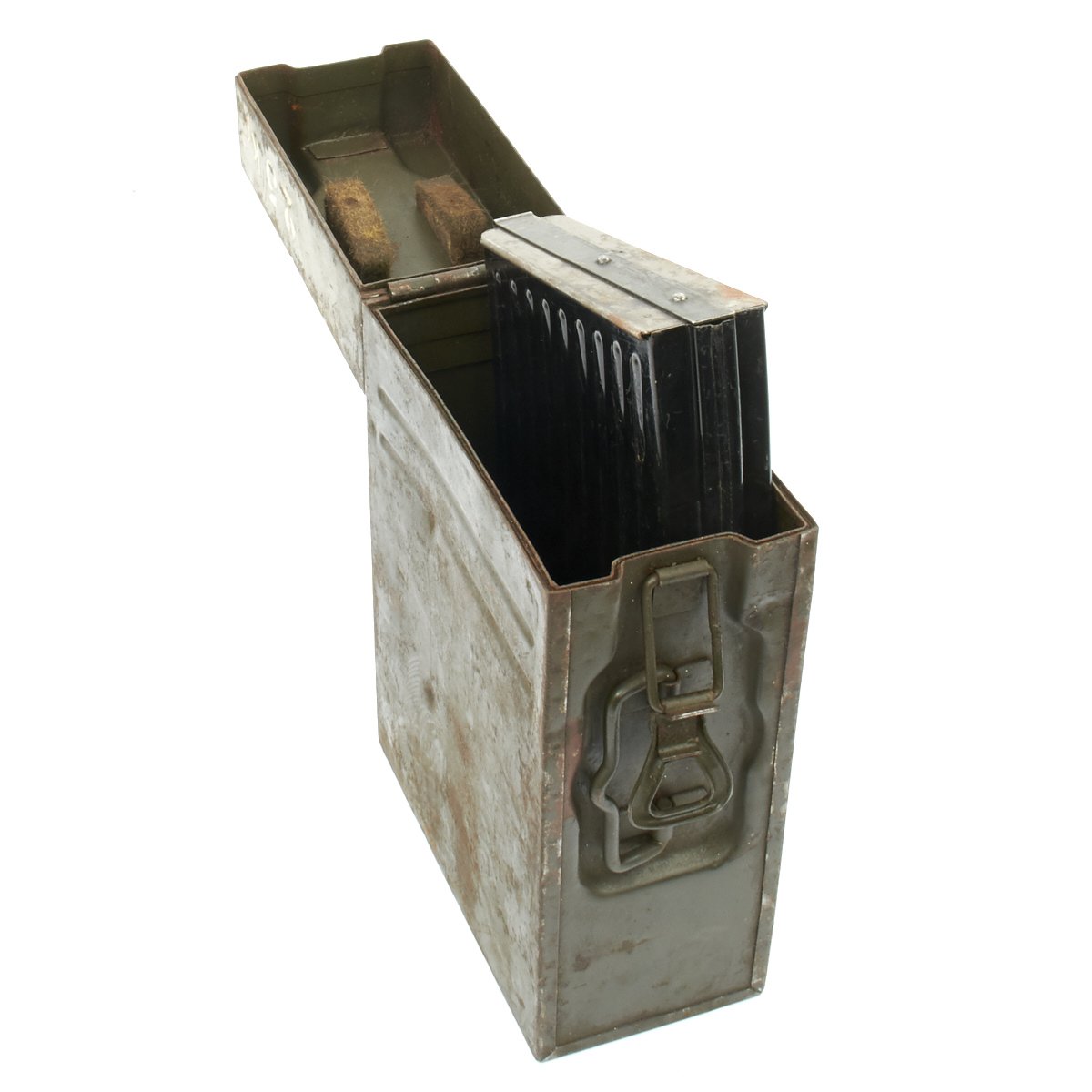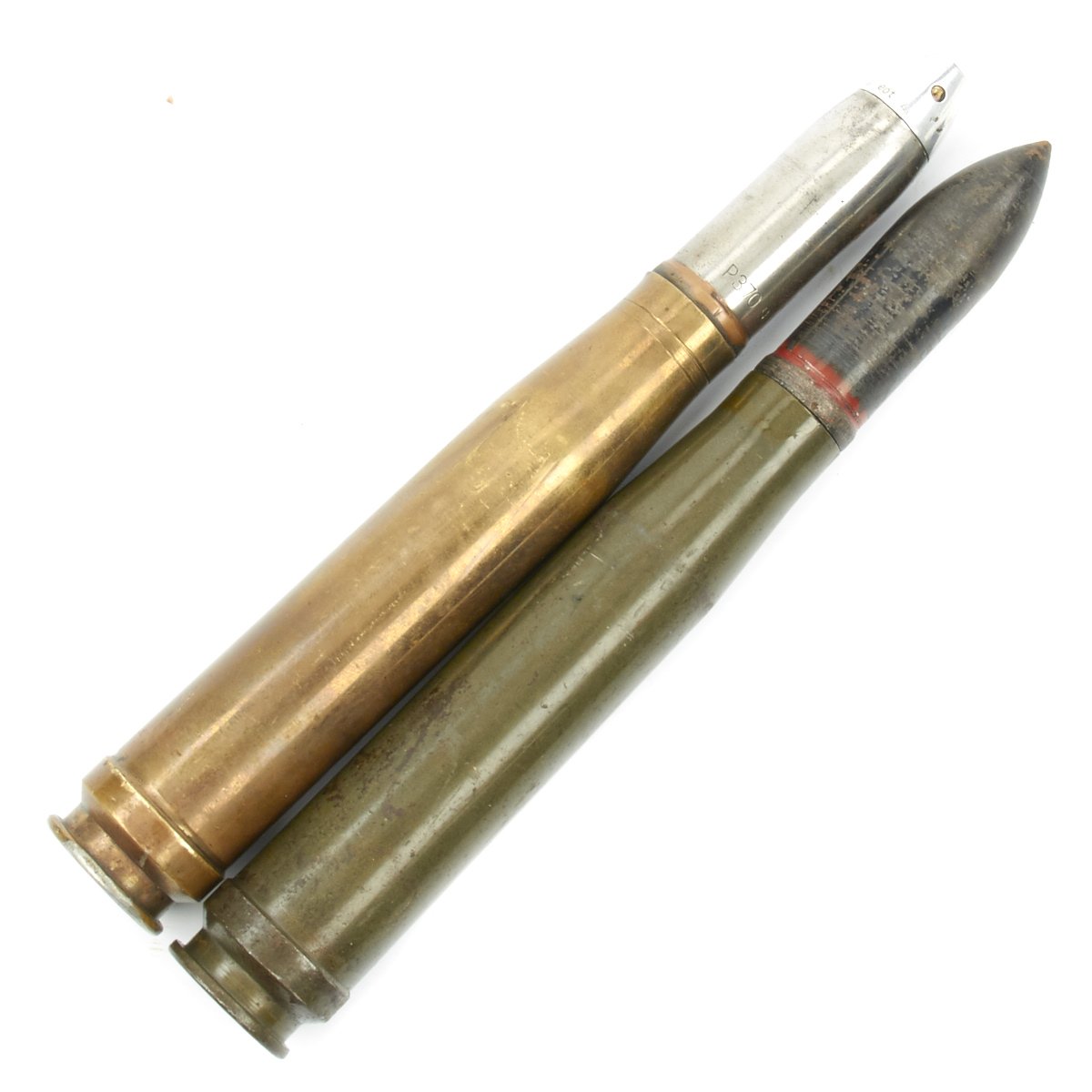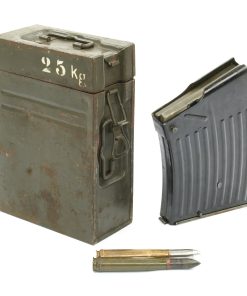Original German WWII Flak 38 Anti-Aircraft Gun 20 mm Magazine with Case and Inter Rounds – Flakvierling 38 Original Items
$ 995,00 $ 248,75
Original Item: Only One Available. Near mint condition example of a genuine 1944 dated German WW2 Flak 88 20mm magazine complete with two inert rounds and double carrier transit chest. The 20 round magazine bears Waffenamt (WaA) as well as a manufacture code and 1944 date. The steel transit chest can accommodate two magazine is nicely marked and is also in excellent condition.
The Flak 30 (Flugabwehrkanone 30) and improved Flak 38 were 20 mm anti-aircraft guns used by various German forces throughout World War II. It was not only the primary German light anti-aircraft gun, but by far the most numerously produced German artillery piece throughout the war.[1] It was produced in a variety of models, notably the Flakvierling 38 which combined four Flak 38 autocannons onto a single carriage.
Even as the Flak 30 was entering service, the Luftwaffe and Heer (army) branches of the Wehrmacht had doubts about its effectiveness, given the ever-increasing speeds of low-altitude fighter-bombers and attack aircraft. The Army in particular felt the proper solution was the introduction of the 37 mm caliber weapons they had been developing since the 1920s, which had a rate of fire about the same as the Flak 38, but fired a round with almost eight times the weight. This not only made the rounds deadlier on impact, but their higher energy and ballistic coefficient allowed them to travel much longer distances, allowing the gun to engage targets at longer ranges. This meant it could keep enemy aircraft under fire over longer time spans.
The 20 mm weapons had always had weak development perspectives, often being reconfigured or redesigned just enough to allow the weapons to find use. Indeed, it came as a surprise when Rheinmetall introduced the 2 cm Flakvierling 38, which improved the weapon just enough to make it competitive once again. The term Vierling literally translates to “quadruplet” and refers to the four 20 mm autocannon constituting the design.
The Flakvierling weapon consisted of quad-mounted 2 cm Flak 38 AA guns with collapsing seats, folding handles, and ammunition racks. The mount had a triangular base with a jack at each leg for levelling the gun. The tracker traversed and elevated the mount manually using two handwheels. When raised, the weapon measured 307 cm (10 feet 1 inch) high.
Each of the four mounted guns had a separate magazine that held only 20 rounds. This meant that a maximum combined rate of fire of 1,400 rounds per minute was reduced practically to 800 rounds per minute for combat use – which would still require that a magazine to be replaced every six seconds, on each of the four guns. This is the attainable rate of fire; the sustained rate of fire is significantly lower due to rapid heat buildup and barrel erosion. Automatic weapons are typically limited to roughly 100 rounds per minute per barrel to give time for the heat to dissipate, although this can be exceeded for short periods if the firing window is brief.
The gun was fired by a set of two pedals — each of which fired two diametrically opposite barrels — in either semi-automatic or fully automatic mode. The effective vertical range was 2,200 metres. It was also used just as effectively against ground targets as it was against low-flying aircraft
Fast Shipping with Professional Packaging
Thanks to our longstanding association with UPS FedEx DHL, and other major international carriers, we are able to provide a range of shipping options. Our warehouse staff is expertly trained and will wrap your products according to our exact and precise specifications. Prior to shipping, your goods will be thoroughly examined and securely secured. We ship to thousands clients each day across multiple countries. This shows how we're dedicated to be the largest retailer on the internet. Warehouses and distribution centres can be located throughout Europe as well as the USA.
Note: Orders with more than one item will be assigned a processing date depending on the item.
Before shipping before shipping, we'll conduct a thorough inspection of the items you have ordered. Today, the majority of orders will be delivered within 48 hours. The delivery time will be between 3-7 days.
Returns
The stock is dynamic and we cannot completely manage it because multiple stakeholders are involved, including our factory and warehouse. So the actual stock may alter at any time. It's possible that you may not receive your order once the order has been made.
Our policy is valid for a period of 30 days. If you don't receive the product within 30 days, we are not able to issue a refund or an exchange.
You can only return an item if it is unused and in the same state as the day you received it. You must have the item in its original packaging.
Related products
Uncategorized
Uncategorized
Uncategorized
Armoured Fighting Vehicles of the World: AFVs of World War One (Hardcover Book) New Made Items
Uncategorized
Uncategorized
Uncategorized
Armored Burgonet Helmet & Polearm from Scottish Castle Leith Hall Circa 1700 Original Items
Uncategorized
Uncategorized
Uncategorized
Angolan Rebel 1970s era 60mm Inert Display Mortar from Angolan Civil War Original Items
Uncategorized
Uncategorized
Uncategorized
Uncategorized
Uncategorized
Uncategorized
Uncategorized
Australian WWII Owen MK1 Machine Carbine SMG Custom Fabricated Replica with Sling Original Items
Uncategorized
Uncategorized
Uncategorized
Uncategorized
